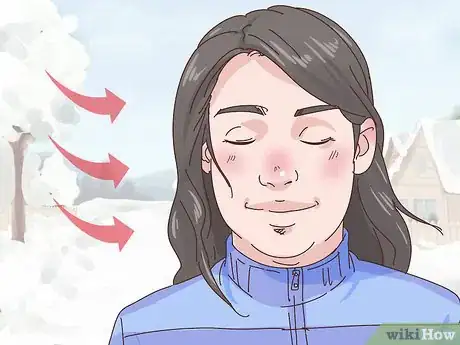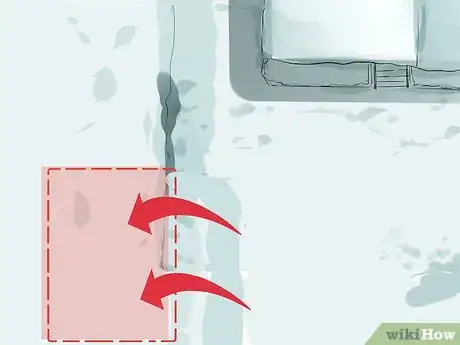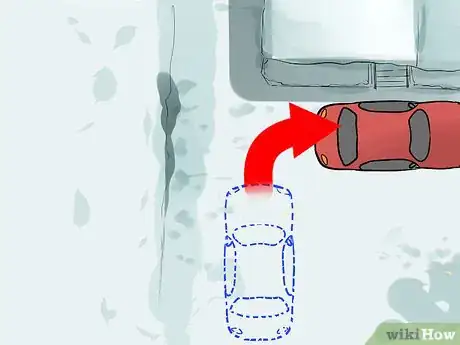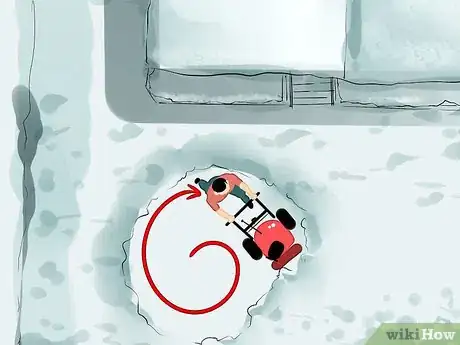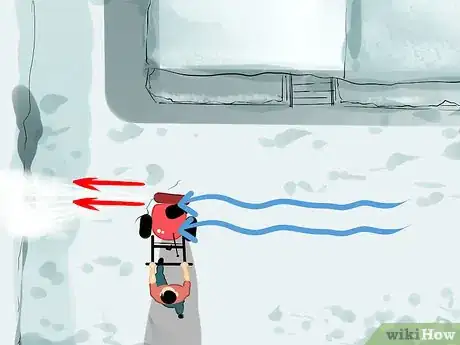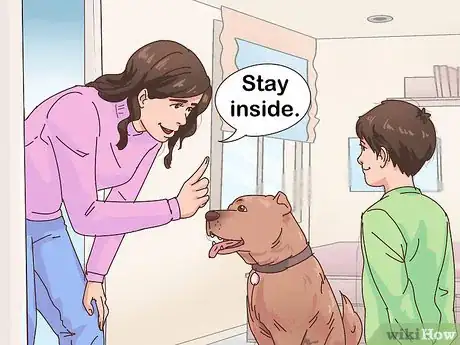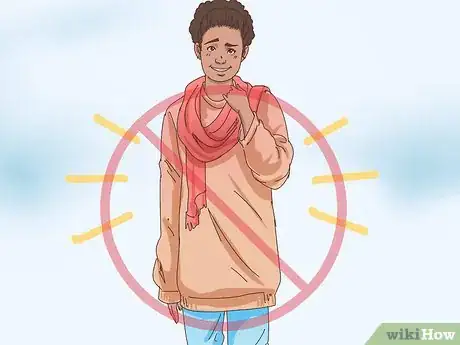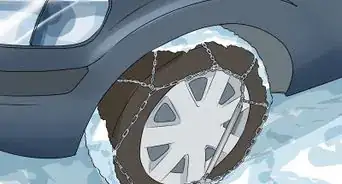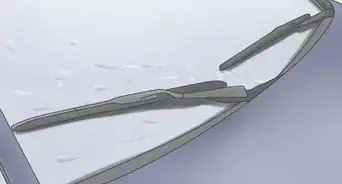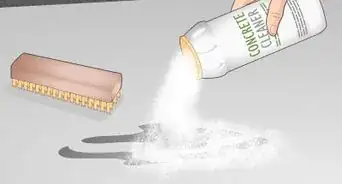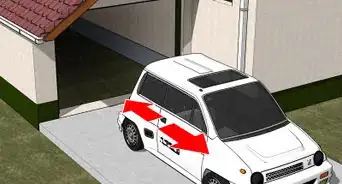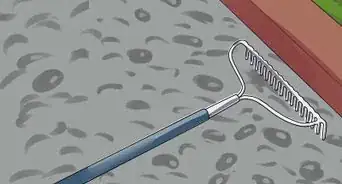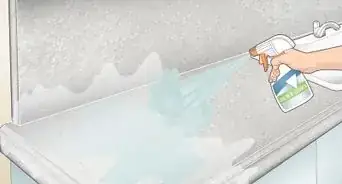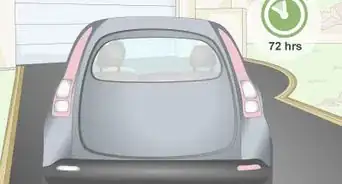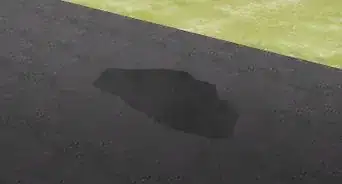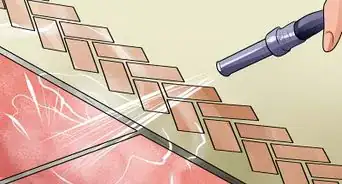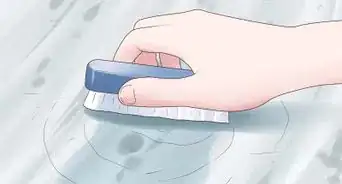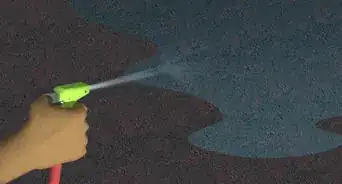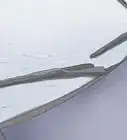This article was co-authored by Anthony "TC" Williams. Anthony "TC" Williams is a Professional Landscaper in Idaho. He is the President and Founder of Aqua Conservation Landscape & Irrigation, an Idaho Registered Landscape Business Entity. With over 21 years of landscaping experience, TC has worked on projects such as the Idaho Botanical Garden in Boise, Idaho. He is a Idaho Registered Contractor and a previously Licensed Irrigator in the State of Texas.
This article has been viewed 353,124 times.
Snow blowing your driveway and sidewalks can be a quick and easy way to remove snow from your driveway. Before you snow blow, assess the situation. The shape of your driveway and the direction of the wind all affect how you should snow blow. Then, start the snow blower and run it through your driveway to remove snow. Make sure to practice basic safety, such as avoiding loose fitting clothing, to stay safe while snow blowing.
Steps
Assessing the Situation
-
1Determine which direction the wind is blowing. Before you begin snow blowing, stand outside and feel the wind against your face. When you snow blow, you should move in the direction of the wind. Snow blowing against the wind will result in snow blowing against your face while you work.[1]
- If you can't tell the direction of the wind, try licking your finger and then holding in front of your face. The wetness will help you feel the wind better. You can also throw a handful of loose snow up in the air. The direction it lands is the direction that the wind is blowing.
- Look at moving or waving objects, such as trees, flags, or wind chimes. If they're bending or turning a certain way, it means that the wind is pushing them in that direction.
-
2Choose a place for the snow to build up. You need to blow the snow away from your driveway. Ideally, you should blow the snow as far into the yard as possible. Check your snow blower's capability to see how far you can blow snow using the highest setting. Plan to twist the nozzle as necessary to get the snow into the appropriate spot in your yard.
- Aim to blow the snow towards an unused area of your yard. Avoid blowing the snow into places like walkways or near the mailbox.
- Remember that the pile of snow will melt in spring, so try to blow the snow towards an area that has good drainage.
- Make sure your snow blower does not blow the snow too far out. You don't want to use a setting that would blow your snow into a neighbor's yard.
Advertisement -
3Prepare the snow blower. Be sure to check the condition of the snow blower before using it. You may have to make some adjustments depending on the snow blower's condition and your driveway. Check the following:
- Check the machine's oil before every use (applies to 4 cycle engines). Snow blowers can often burn oil without smoking, and the lack of the proper amount and/or correct type of oil can kill your machine quickly.
- Fill the machine with fuel before starting, to avoid breaking your routine and walking back to your garage just to re-fuel. This should be done outdoors to prevent vapor build-up. Do not add fuel to a hot engine; a snow blower's engine must be cooled down first.
- Add a fuel stabilizer if it is extremely cold outside. This will help prevent the fuel from freezing and gelling inside of the snow blower.
- Check the skid shoes, which are the metal pieces on the bottom of the snow blower. If you have a paved driveway, make sure the skid shoes are set to the lowest setting. For a gravel driveway, skid shoes should be set higher up to avoid displacing the gravel.
Snow Blowing the Driveway
-
1Clear off your car and walkways first. Before you begin snow blowing, clear off your car if it's out in the driveway or parked in the street. This will prevent you from having to clear the snow around your car after snow blowing. Then clear any walkways leading from the driveway to your front door.[2]
-
2Make circular motions if there is no wind. If there is no wind, start in the center of the driveway. Keep the snow nozzle pointed outward towards the yard surrounding the driveway. Work in circles, moving outward as you go.
-
3Work side to side if there is wind. If there is a wind, point the snow nozzle in the direction the wind blows. Start in the upward direction of the wind, moving your snow blower side to side. Move your snow chute as necessary to keep it pointed in the direction of the wind.
-
4Shovel any remaining snow. While you can remove most of the snow with a snow blower, there may be small bits of snow accumulated when you finish. There may be snow stuck in tight or narrow spots in the driveway that are difficult to reach with a snow blower. Use a shovel to clear out these spots.
- Alternatively, if you know there are difficult areas, clear those areas first so that you do not have to shovel them later.
Taking Safety Precautions
-
1Make sure all objects, pets, and children are out of the area. Make sure the area is clear before you begin snow blowing. Keep your children out of the driveway and the surrounding area. Make sure pets are not near the driveway when snow blowing. Remove any obstacles or items that might get in your way.[3]
- If you have pets that you allow outside, keep them indoors while using the snow blower.
-
2Do not wear loose-fitting clothes. Loose-fitting clothes, like loose jackets and scarves, can get caught in a snow blower and cause injury. Make sure to wear form-fitted jackets and, if you wear a scarf, make sure it's tucked into your jacket while you run your snow blower. Sturdy, insulated boots are also a must.[4]
- Dress in layers in the winter to keep yourself warm. Tuck your layers into one another to prevent any loose clothing from getting caught.
-
3Turn off the machine when you step away from it. If you need to step away from the snow blower for any reason, turn it off first. Always power down the snow blower when stepping away, even if its just for a few seconds.[5]
Community Q&A
-
QuestionDo I snow blow after 6 inches or wait? In the morning it may be 15 inches deep.
 Community AnswerIt all depends on what your blower can handle. If you're unsure of your blower's performance specifics, you can usually find them in the user's manual. If you have a powerful snow blower that's able to handle snow around 15 inches deep, go ahead and wait until the snow stops before blowing. This can help to save energy and gasoline. If you have a less powerful snow blower, start blowing around six inches or so.
Community AnswerIt all depends on what your blower can handle. If you're unsure of your blower's performance specifics, you can usually find them in the user's manual. If you have a powerful snow blower that's able to handle snow around 15 inches deep, go ahead and wait until the snow stops before blowing. This can help to save energy and gasoline. If you have a less powerful snow blower, start blowing around six inches or so. -
QuestionCan you put or move in reverse to reposition while the auger is engaged without causing damage
 Community AnswerCheck your manufacturer's instructions. It depends on the model of snowblower.
Community AnswerCheck your manufacturer's instructions. It depends on the model of snowblower. -
QuestionShould I try to snow blow before a blizzard is over? Or just wait until the snow stops?
 Community AnswerIt really depends on how much snow there is and if you're willing to go out in the snow. If there is a medium amount of snow, such as 10cm/4inches and the snow is still going, you could certainly go out and get rid of a bit of snow. In general, just get rid of a bit here and there to make sure you can get out of your house relatively easily. This is better than having a very large amount of snow blocking your exit.
Community AnswerIt really depends on how much snow there is and if you're willing to go out in the snow. If there is a medium amount of snow, such as 10cm/4inches and the snow is still going, you could certainly go out and get rid of a bit of snow. In general, just get rid of a bit here and there to make sure you can get out of your house relatively easily. This is better than having a very large amount of snow blocking your exit.
References
- ↑ http://yardcare.toro.com/maintain/snow-info/snowblower-safety-tips/
- ↑ http://www.huffingtonpost.com/michelle-faulkner/snowblowing-for-virgins_b_6307878.html
- ↑ http://yardcare.toro.com/maintain/snow-info/snowblower-safety-tips/
- ↑ http://yardcare.toro.com/maintain/snow-info/snowblower-safety-tips/
- ↑ http://yardcare.toro.com/maintain/snow-info/snowblower-safety-tips/
